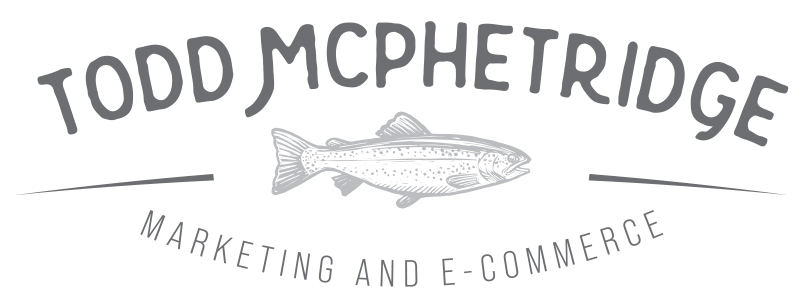When costs climb, weak openers get punished first. Prospecting lives or dies in the first three seconds, and the hook controls whether your ad earns a second look, a click, and a qualified session. This guide gives performance leads a practical paid social strategy for building prospecting hooks, a simple creative testing framework, and landing paths that match intent. Use it to scale net new reach without paying a tax for lazy intros.
Why hooks matter more as CPMs rise
- Attention cost: every impression is more expensive, so the first frame must carry its weight.
- Signal quality: a clear hook sends the right people to the right page, which improves conversion and lowers blended CAC.
- Learning speed: strong openers create cleaner reads on which pillars work, so you waste fewer cycles on dead ideas.
The three building blocks
- Message pillars: the themes your best buyers care about. Pillars focus your concept work and reduce randomness.
- First three seconds: the opening frame, copy line, and visual that deliver the promise quickly.
- Landing intent: the page family that pays off the hook. Prospecting needs a path that answers the promise directly.
Six prospecting pillars that travel across categories
Pick three or four pillars as your base. Rotate inside each pillar rather than jumping between unrelated ideas.
- Utility: solve a practical job. Example prompts: faster setup, easier cleaning, better fit, fewer steps.
- Proof: show undeniable evidence. Example prompts: side by side, stress test, count of reviews, independent standard.
- Transformation: before and after in one shot. Example prompts: room makeover, skin change, workflow time saved.
- Founder POV: a direct line from the maker. Example prompts: design choice explained, tough tradeoff, origin story tied to a flaw in the category.
- Social validation: customers on camera. Example prompts: first time reaction, skeptical user converts, expert walks through results.
- Obstacle removal: handle the biggest objection right away. Example prompts: price justification snippet, delivery window at the top, returns and warranty in plain text.
The first three seconds playbook
Use this checklist for the opening frame and line. Your goal is to earn the next three seconds without tricks.
- Clarity first: name the job and outcome in plain language. Example: “Clean a full grill in three minutes.”
- Visual truth: show the result in frame one. Avoid slow hero shots. Move straight to the moment of change.
- Blocking and scale: include a hand, a face, or a common object for size reference.
- Caption discipline: one short line, large type, high contrast, safe margins for platform UI.
- Sound optional: assume muted playback. If you use VO, mirror the promise in captions.
- Logo timing: allow one beat after the promise before the logo. Avoid leading with branding alone.
Hook patterns you can copy today
These are starting points you can adapt to your product and audience.
- Stopwatch demo: promise plus timer on screen while the job gets done. Good for cleaning, cooking, setup, or assembly.
- Split screen proof: left side old method, right side your method. Keep the reveal in frame one. Works for time savings and quality comparisons.
- Drop test or stress test: prove durability with a clear pass or fail. Use a simple label like “steel hinge” rather than jargon.
- Cost per use math: price justification in under three seconds. Example: “$0.25 per brew for café taste at home.”
- Customer challenge: put a skeptic on camera. State their doubt in the first caption then show the switch.
- Founder fix: maker explains the flaw in the category and the exact change in your product that fixes it.
Landing intent that matches the hook
Prospecting clicks should not land on a generic page. Route by intent so the promise gets answered quickly.
- Comparison page: best fit for proof and obstacle removal hooks. Show a tight table, price context, and an honest tradeoff.
- Guide or explainer: best for utility or founder POV hooks. Teach the job in a short page with scannable steps.
- PDP with price justification block: best for transformation or cost per use hooks. Put materials, origin, and a simple math line near the CTA.
Creative testing framework for prospecting hooks
Keep it light and consistent so you can learn fast and scale winners.
- Choose three pillars for the month. For each pillar, write two hook lines and two opening visuals. That gives you four variants per pillar.
- Protect a test lane. Do not mix test creatives into your scaled sets. Give tests enough budget to hit significance on add to cart CPA.
- Use clear naming and UTMs. Name assets with pillar and hook code. Auto append UTMs for clean reads in analytics.
- Measure in layers. Use platform CTR and holdout CPA to prune quickly. Confirm with blended CAC and landing conversion in analytics.
- Retire laggards fast. Kill concepts that miss early signals. Replace with the next hook in the same pillar so you keep the learning focused.
Hook-to-landing matrix
| Hook Type | Opening Line | First Frame | Best Landing | Primary Metric |
|---|---|---|---|---|
| Utility | “Install in five minutes” | Hands completing step two of five with a progress bar | Short guide with steps and CTA blocks | Qualified session rate and guide completion |
| Proof | “Twice the suction on carpet” | Split screen with rice or glitter pickup | Comparison page with table and review pulls | Add to cart from comparison |
| Transformation | “From flat to volume in 20 seconds” | Before and after in one take | PDP with price justification and care notes | Conversion rate from PDP |
| Founder POV | “We fixed the weak hinge” | Closeup of the hinge under load | Guide explaining design choice with CTA tiles | Click through to PDP and add to cart |
| Social validation | “Skeptic tries it live” | Customer reaction within one second | PDP with review filters and media-first module | Conversion and review expansion |
| Obstacle removal | “Ships by Tuesday. Free returns” | Delivery date overlay and returns icon | PDP with trust stack above the fold | Add to cart and bounce rate |
Copy rules for high performing hooks
- One promise at a time: no lists in the opener. Deliver a single clear outcome.
- Short and specific: numbers beat adjectives. Use time saved, life span, or cost per use.
- Plain voice: avoid hype. Write like a helpful salesperson who knows the product well.
- Mirror the landing: repeat the promise as a headline on the destination page.
Asset specs that protect performance
- Length: six to fifteen seconds for prospecting videos. Anchor the story in the first three seconds.
- Safe zones: keep captions and logos clear of UI elements for the main platforms.
- Compression: optimize files to maintain snap on mobile without heavy load times.
- Variants: export square and vertical to respect placement differences.
Reading results without fooling yourself
Prospecting can look weak inside the ad platform and still win in blended terms. Use a short list of reads so you scale the right winners.
- Platform reads: hook CTR, holdout CPA to add to cart, and early thumb stop rate. Use to prune fast.
- Analytics reads: landing conversion by page family and qualified session rate from each creative code.
- Cohort reads: day 30 revenue per acquired customer by pillar to confirm downstream value.
Common failure modes and fixes
- Pretty openers with no promise. Fix by naming the job in the first caption and showing the outcome in frame one.
- Mismatch between ad and landing. Fix by routing to comparison, guide, or PDP based on the hook type and repeating the promise on page.
- Testing chaos. Fix by limiting pillars, labeling assets, and protecting a separate test lane with enough budget to learn.
- Promo dependency. Fix by using price justification lines instead of codes in the hook. Keep discounts out of prospecting intros.
Swipe lines you can use today
Adapt these to your category and product. Pair each with a matching landing.
- Utility: “Set up in five minutes with one tool.”
- Proof: “Removes oil in one pass. Watch the wipe.”
- Transformation: “From dull to shine in 60 seconds.”
- Founder POV: “We replaced the weak zipper with steel teeth.”
- Social validation: “Skeptic test. No script. Real result.”
- Obstacle removal: “Ships by Tuesday. Free returns for 30 days.”
Team roles and cadence
- Creative lead: builds two openings per pillar each week. Delivers captions and safe-zone files.
- Media buyer: owns test lanes, budgets, and early platform reads. Retires losers quickly.
- Analytics: tracks UTMs, landing conversion by family, and cohort revenue by pillar.
- Founder or GM: reviews a single page with three decisions each week. Approves scale on blended results.
FAQ for performance leads
How many hooks should we test at once
Four to eight is a healthy weekly target across two pillars. Add new ideas only when you retire laggards.
Do we always need new production
No. You can edit existing footage into new openings. Most lifts come from the first frame and caption, not from a full reshoot.
What if CPMs keep rising
Tighten the opener, route to pages that pay off the promise, and hold your prospecting share. Do not shift all spend to warm audiences. Growth depends on net new reach.
Ask for a Hook Map
If you want a ready to ship plan, request a hook map. You will get a focused set of prospecting pillars, opening lines for each, and landing intent routes that fit your offer. The package includes a light creative testing framework and weekly reads so your team can scale winners quickly without wasting budget on weak intros.

















